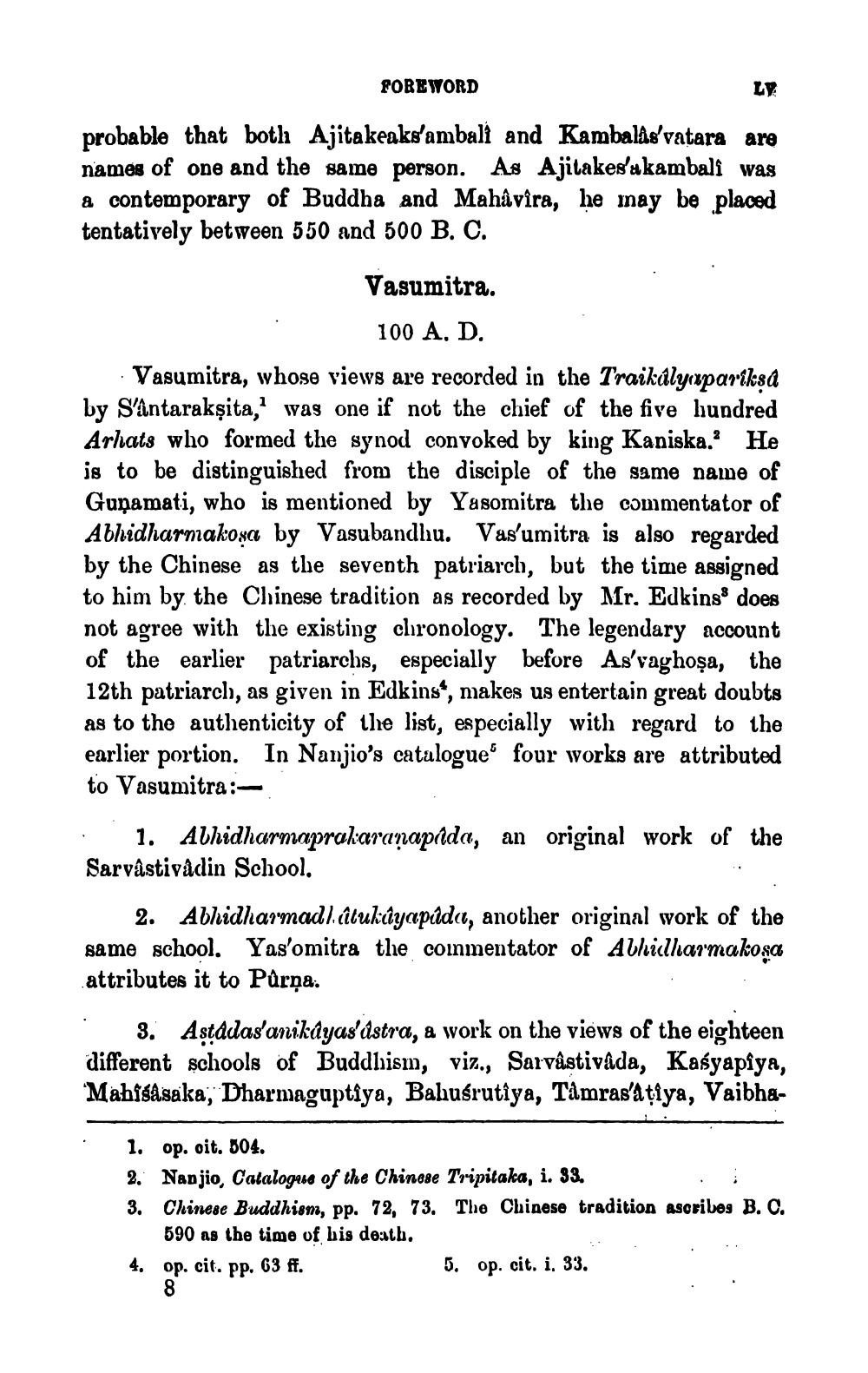________________
FOREWORD
LY
probable that both Ajitakeaks'ambali and Kambalás'vatara are names of one and the same person. As Ajitakesakambali was a contemporary of Buddha and Mahavira, he may be placed tentatively between 550 and 500 B. C.
Vasumitra.
100 A. D. · Vasumitra, whose views are recorded in the Traikály pariksa by Santarakṣita,' was one if not the chief of the five hundred Arhats who formed the synod convoked by king Kaniska. He is to be distinguished from the disciple of the same name of Guņamati, who is mentioned by Yusomitra the commentator of Abhidharnakosa by Vasubandhu. Vas'umitra is also regarded by the Chinese as the seventh patriarch, but the time assigned to him by the Chinese tradition as recorded by Mr. Edkins' does not agree with the existing chronology. The legendary account of the earlier patriarchs, especially before As'vaghoșa, the 12th patriarch, as given in Edkins, makes us entertain great doubts as to the authenticity of the list, especially with regard to the earlier portion. In Nanjio's catalogue four works are attributed to Vasumitra:· 1. Alhidharmaprakaranapada, an original work of the Sarvâstivadin School.
2. Abhidharmadlatukůyapada, another original work of the same school. Yas'omitra the coinmentator of Abhidharmakosa attributes it to Purņa.
3. Astádas'anikayas'dstra, a work on the views of the eighteen different schools of Buddhism, viz., Sarvâstivada, Kaśyapiya, Mahisasaka, Dharmaguptiya, Bahuśrutiya, Tamrasatiya, Vaibha
1. op. oit. 304. 2. Nanjio, Catalogue of the Chinese Tripitaka, i. 93. 3. Chinese Buddhism, pp. 72, 73. The Chinese tradition ascribes B. C.
590 as the time of his death, 4. op. cit. pp. 63 ff.
5. op. cit. i. 33.




